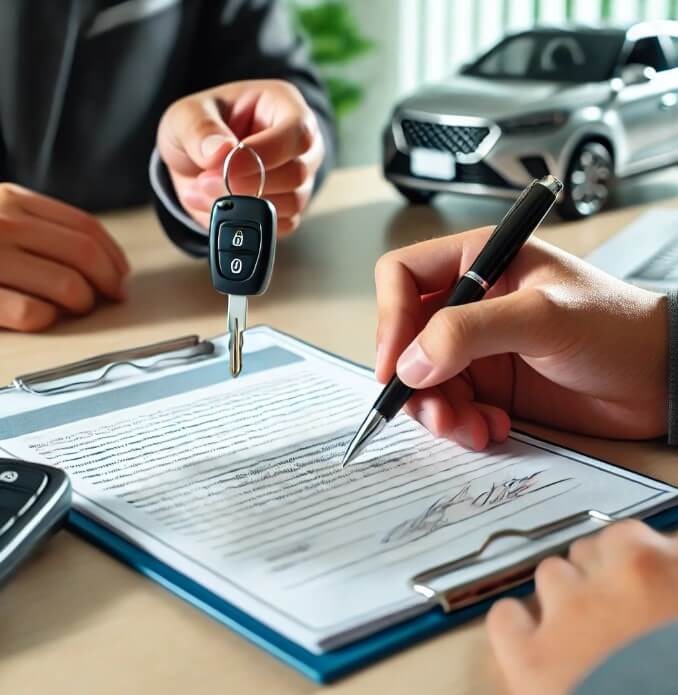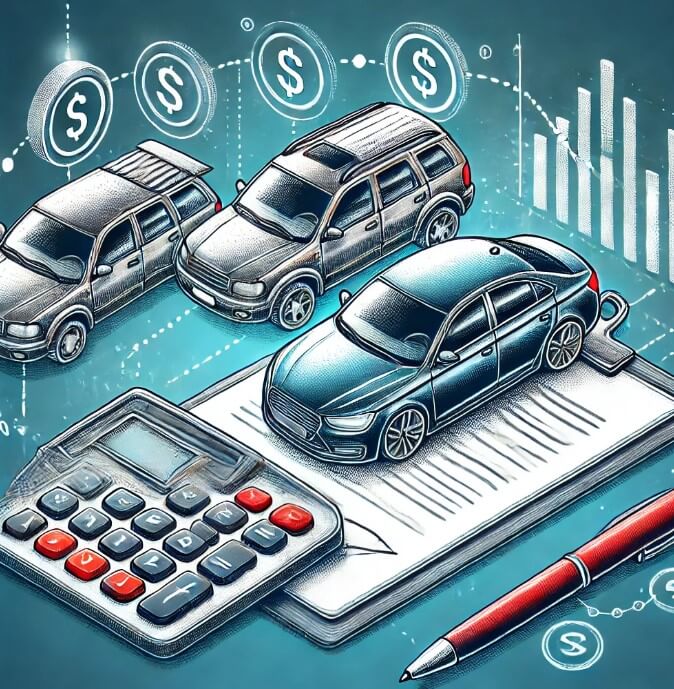While shopping for a fresh car, dealership advertisements that claim to “pay off your trade no matter what you owe” may appear enticing. If you have an outstanding loan against your present car, these ads are designed to be very attractive. But there are financial implications that come with such deals which you should know about.
Therefore, this article seeks to explore the truth behind these offers and how they operate, as well as it is intended to give you points of consideration before trading in your car. The article examines auto dealerships pledging pay off all debts owed on trade-ins without exceptions.
How Do Dealerships That Pay Off Your Trade Work?

When a dealership claims it will ‘pay off the trade in regardless of how much is owed’, it does not mean they take over the debt on the vehicle for you. Instead, any outstanding amount called negative equity is absorbed into the loan for your next automobile purchase.
For example:
- Your Vehicle Worth: $15,000
- How Much You Owe the Bank: $20,000
- The difference between the two: -$5,000
Negative Equity and Its Impact on a New Loan
| Scenario | Details | Impact on New Loan |
|---|---|---|
| Market Value of Trade-In | $15,000 | The amount the dealership offers for your vehicle. |
| Loan Balance on Trade-In | $20,000 | The amount still owed on your current car loan. |
| Negative Equity | $5,000 | The difference between the trade-in value and the loan. |
| Price of New Vehicle | $30,000 | The cost of the new car you are purchasing. |
| Total New Loan Amount | $35,000 | $30,000 (new vehicle) + $5,000 (negative equity). |
| Monthly Payment Increase | Higher than a loan without rollover | Increased debt leads to higher monthly payments. |
| Interest Rate | Often higher with more debt | Larger loans can have higher interest rates. |
| Loan Term | Typically extended | Longer repayment terms to make monthly payments lower. |
Your new car will be worth the same as your old one. And the dealership will “pay off” your $20,000 loan but add the $5,000 shortfall to the cost of your new car. Thus if you are buying a car worth $30,000 for example you’re going to have about $35k on your new loan plus any additional fees.
This way may address the immediate problem of trading in a vehicle but it also raises your liabilities. Rolling negative equity into a new loan can increase monthly payments and lengthen repayment terms.
What Is Negative Equity?
Negative equity refers to owing more on your auto loan than the collateral’s value. There are various reasons for this kind of situation as listed below:
- Cars rapidly depreciate after purchase which may lead to 20-30% drops in value within their first year.
- High rate loans take away your equity better than low-rate ones do.
- Slowly accumulating equities are produced by loans that run for six to seven years.
When trying to sell or trade-in an automobile with negative equity one finds it tough not to take a financial hit. Dealerships’ response is always that they will “pay off your trade” because they know consumers would rather keep making payments on something they no longer own than acknowledge that they own more money for something than it was worth yesterday (by starting out in debt).
Pros and Cons of Trading in a Car with Negative Equity
Pros
- Simple Process: You don’t have to handle the payoff process as the dealership will do that for you.
- Opportunity to Upgrade: You can trade in your vehicle for a newer model.
- One Loan: Consolidates your old loan and new car purchase into one loan.
Cons
- Higher Loan Amount: The rolled-in debt increases your overall loan balance.
- Increased Interest: A higher loan amount typically comes with higher interest payments.
- Longer Debt Service Periods: You may remain in negative equity for a longer period.
How to Determine If a Dealership Offer Is Worth It
Consider various issues revolving around trading in your vehicle that has negative equity such as listed below:
1. Establish Your Car’s Market Value
Use trusted resources like Kelley Blue Book to provide an estimate on what your car is currently worth on the market; this will give you an idea of how deep it is into negative equity.
2. Calculate Your Outstanding Loan Balance
Contact your lender and request his/her help calculating exactly how much it would cost to pay off your loan in full; this figure compared against the value of your car will give you its negative equity amount on paper..
3. Understand the New Loan Terms
Ask for more details about this new loan from the dealership which should include:
- Interest rate
- Monthly payment
- Loan term
Ensure the terms are manageable and avoid overextending your budget.
4. Consider Paying Down the Negative Equity
It would be better if you can pay off some or all of the negative equity out-of-pocket to lower what is rolled into the new loan and reduce future financial difficulties.
Other Options to Trade in a Car with Negative Equity
If you are unwilling to trade in a car with negative equity, consider these alternatives:
1. Keep Your Current Car
Keep paying for your current loan until your vehicle’s market value meets or exceeds what is owed on it.
2. Sell the Car Privately
When selling your car, you can get a better price compared to exchanging it which can cut down or eliminate negative equity.
3. Refinance Your Loan
With high interests rates, refinancing your loan may result in lower monthly fees and assist you in establishing ownership quickly.
4. Lease a Vehicle
Leasing another car may be an inexpensive way of switching cars without incurring large debts.
Tips for Dealing with Dealerships
- Separate the Transactions
Negotiate the trade-in and new car purchase as separate deals to avoid confusion and ensure transparency. - Get Multiple Offers
Visit several dealerships to compare trade-in offers and find the best deal. - Read the Fine Print
Understand all terms and conditions, including how the dealership handles negative equity. - Examine The Overall Cost
Do not only consider monthly payments but also calculate the total cost of credit taking into account interest rate and other charges.
FAQs
1. Do dealerships always pay off the full amount of my loan?
Yes, but they usually add up your negative equity to the new loan thus increasing total debt burden.
2. How does trading in a car with negative equity work out?
This depends on your financial situation; although it may simplify things, it could lead to more debt later on.
3. Is it possible to haggle over an old car’s exchange value?
Sure! Talk to dealer representatives concerning more favorable trade-in arrangements as far as possible beforehand use internet tools to check out what kind of value your automobile has got today.
4. In case I do not pay the new loan, what happens?
The vehicle can be repossessed if the loan defaults and this will impact your credit score negatively.
5. Are there alternatives to rolling negative equity into a new loan?
Certainly, paying off the negative equity on your own, refinancing or selling the car privately.
Conclusion
While dealerships that claim to “pay off your trade no matter what you owe” can provide a convenient solution for upgrading your vehicle, it’s essential to understand the financial implications. Always calculate your negative equity, review the new loan terms, and consider alternatives before making a decision.
Taking these steps will help you avoid unnecessary debt and make a more informed choice about your vehicle trade-in.


